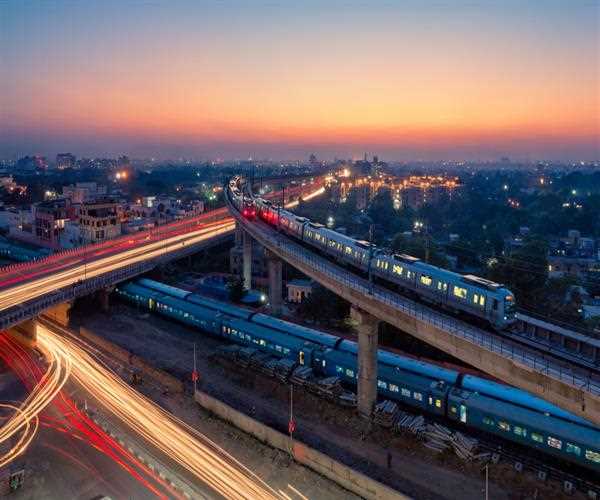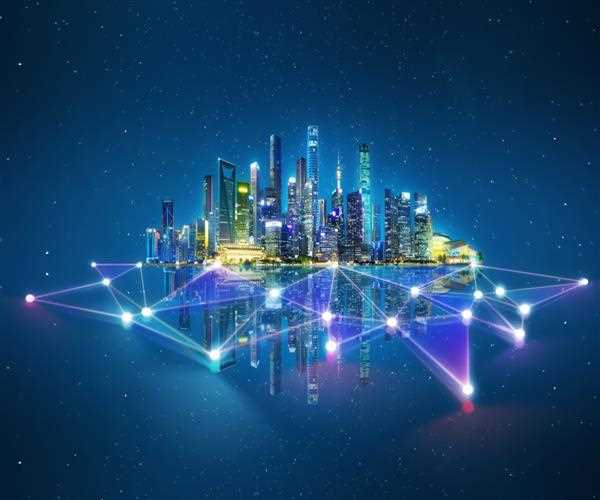Search here

01-Aug-2023 , Updated on 8/1/2023 4:05:17 AM
Infrastructure development in India- Challenges, Progress and Prospects
Highlights
- India has been focusing on infrastructure development to support its rapid economic growth and urbanization.
- The government launched flagship programs like "Bharatmala," "Sagarmala," "Smart Cities Mission," and "Pradhan Mantri Gram Sadak Yojana" to boost infrastructure across the country.
- Transportation infrastructure has been a key area of focus, with the construction of new highways, expressways, and modernization of airports and ports.
- The Indian Railways has been undergoing significant modernization and expansion, with the introduction of high-speed trains and improvements in passenger amenities.
- Renewable energy infrastructure has witnessed substantial growth, with India becoming one of the leading countries in solar and wind power installations.
- The government has been investing in digital infrastructure, promoting digital connectivity and internet penetration in rural areas through initiatives like "Digital India."
Infrastructure is the backbone of any thriving economy, and India, being one of the fastest-growing economies in the world, has witnessed significant strides in this domain. Over the past few decades, the country has embarked on ambitious infrastructure projects to bolster its economic growth, improve connectivity, and enhance the overall quality of life for its citizens.
The Indian government has recognized the importance of infrastructure and has made it a priority. The government has launched a number of initiatives to improve infrastructure, such as the National Infrastructure Pipeline (NIP) and the Pradhan Mantri Gram Sadak Yojana (PMGSY).
The NIP is a plan to invest $1.5 trillion in infrastructure over the next five years. The PMGSY is a plan to build all-weather roads in rural areas.
The Indian government has also made it easier for foreign investors to invest in infrastructure projects. This has helped to attract investment from foreign companies, such as the Tata Group and the Adani Group.
The improvement of infrastructure in India is a long-term process. However, the government's initiatives are a step in the right direction. If the government continues to invest in infrastructure, it will help to unlock the country's economic potential.
In addition to the government's initiatives, there are a number of things that businesses can do to improve infrastructure in India.
Challenges in Infrastructure Development
- Population and Urbanization- India's ever-growing population and rapid urbanization exert tremendous pressure on existing infrastructure. Cities are grappling with congestion, inadequate housing, and overburdened public services, necessitating massive infrastructure expansion to keep pace with the urban influx.
- Funding and Financing- Funding infrastructure projects demands considerable capital investments, and obtaining financing has been a persistent challenge. While the government allocates substantial funds, collaborations with private entities, foreign investors, and multilateral organizations are crucial to bridge the funding gap effectively.
- Bureaucratic Hurdles- Cumbersome bureaucratic procedures and slow decision-making often delay project implementation. Streamlining administrative processes and enhancing coordination between government bodies and private stakeholders are necessary for expediting infrastructure development.
- Land Acquisition- Acquiring land for projects, especially in densely populated areas, can be a contentious issue. Balancing the needs of development with the rights of displaced communities requires careful consideration and effective resettlement policies.
- Environmental Sustainability- As infrastructure projects expand, so do concerns about their impact on the environment. Striking a balance between development and ecological preservation is vital to ensure sustainable growth.
- Technological Integration- India must embrace cutting-edge technologies in infrastructure development to enhance efficiency, reduce costs, and improve service delivery. Embracing digitization, artificial intelligence, and renewable energy sources can revolutionize the sector.
Progress in Infrastructure Development
Despite the challenges, India has made significant progress in various facets of infrastructure development-
- Transportation- The country has invested heavily in expanding its road network, with a focus on developing national highways and expressways to improve connectivity and reduce travel time. Additionally, ambitious projects like the Bharatmala and Sagarmala aim to boost road and port infrastructure, enhancing trade and logistics.
- Railways- Indian Railways, one of the largest railway networks in the world, has seen notable upgrades with modernization initiatives, including the introduction of high-speed trains and station redevelopment projects.
- Airports- India has witnessed rapid modernization and expansion of airports to accommodate the burgeoning air travel demand. Several airports have been upgraded, and new ones have been constructed to enhance connectivity and foster economic growth.
- Energy- The country has made significant strides in the renewable energy sector, particularly in solar and wind power. India aims to achieve a considerable portion of its energy requirements from renewable sources in the coming years.
- Smart Cities- The government's Smart Cities Mission envisions transforming 100 cities by infusing technology and innovation to enhance urban living standards. Various cities are adopting smart solutions to improve infrastructure, waste management, and public services.

- Digital Infrastructure- India's digital infrastructure has seen exponential growth, with the expansion of internet connectivity and the proliferation of mobile phones. Initiatives like Digital India have driven e-governance, digital payments, and internet accessibility in remote areas.
Prospects for the Future
- India's infrastructure journey is poised for further growth and transformation. Several key areas hold immense potential for development-
- Transportation Networks- India will continue to invest in modernizing and expanding its transportation networks, with a focus on high-speed rail corridors, last-mile connectivity, and integrated multi-modal transport systems.
- Urban Infrastructure- As urbanization intensifies, the emphasis on creating sustainable, smart cities will increase. Equitable access to housing, healthcare, and education will be prioritized to enhance the quality of urban life.
- Renewable Energy- India's commitment to renewable energy will see further expansion, with increased investments in solar, wind, and hydropower projects. The country aims to reduce its carbon footprint and contribute to global climate change efforts.
- Digital Revolution- The digital infrastructure will continue to be a significant focus, with advancements in 5G technology, internet penetration, and the integration of AI and IoT solutions to improve governance and service delivery.
- Water and Sanitation- Sustainable water management and sanitation solutions will gain importance to address water scarcity challenges and improve public health.
- Make in India- Infrastructure development will support the government's 'Make in India' initiative by providing the necessary backbone for industrial growth and exports.
Other things could be-
- Investing in infrastructure projects.
- Working with the government to improve the regulatory environment for infrastructure projects.
- Providing training and skills development to the workforce.
- Promoting public-private partnerships.
Infrastructure development in India is crucial for realizing its economic potential and improving the lives of its citizens. While the challenges are substantial, the progress made so far and the prospects for the future are promising. Continued efforts to address funding, regulatory, and environmental concerns, coupled with embracing technological innovations, will be essential to propel India towards becoming a global infrastructure leader. By nurturing a robust and sustainable infrastructure ecosystem, India can pave the way for a brighter and more prosperous future for its people.

SEO and Content Writer
I am Drishan vig. I used to write blogs, articles, and stories in a way that entices the audience. I assure you that consistency, style, and tone must be met while writing the content. Working with the clients like bfc, varthana, ITC hotels, indusind, mumpa, mollydolly etc. has made me realized that writing content is not enough but doing seo is the first thing for it.
Join Our Newsletter
Subscribe to our newsletter to receive emails about new views posts, releases and updates.
Copyright 2010 - 2025 MindStick Software Pvt. Ltd. All Rights Reserved Privacy Policy | Terms & Conditions | Cookie Policy